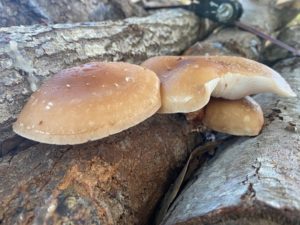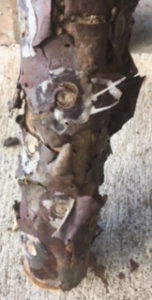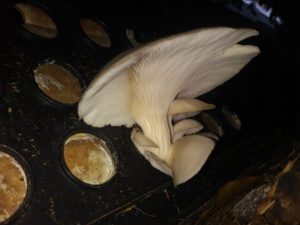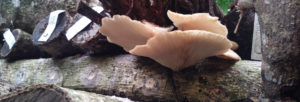We would like to thank everyone that came to our first few workshops & participated in a mass scientific experiment to find out which of our local invasive wood species would be best suited for growing gourmet & medicinal mushroom species here in the tropics. We’ve spent years researching & practicing mushroom cultivation & one thing that we’ve encountered over-and-over again is that the great majority of how-to information out there only describes how to grow mushrooms in cold, temperate climates. We’re going to change that starting right now.
We have many goals for our workshops: getting more locally-grown functional foods into the bellies of those around us, skilling-up our local community, & collectively honing our local mushroom cultivation skills to find out what local best practices are in our bioregion. While there have been many successful highs in this process, we would also like to share the lows so that we can help our community become better mushroom growers.
First the good news, the invasive silky oak (Grevillea robusta) logs that we inoculated with gourmet & medicinal mushroom spawn have been robustly fruiting mushrooms all rainy season long.*

shiitakes on Silky Oak by Adam Hicks
Now for the not-so-good news, the hyper-invasive guava does not work for the traditional log-style of mushroom cultivation. The traditional drilled-hole bolt & standing totem methods require tree bark that is sturdy & robust, as this bark protects the mycelium that grows just underneath it from deadly sunlight, wind, & critters. Unfortunately, the bark of the guava tree is just way too thin & brittle & comes apart before the mycelium can finish running its life cycle to the mushroom fruiting stage.

Guava bolt by Helena Berg
In other good news though, the technique of layered, used cardboard fruited a second flush. This inoculated cardboard crate has now yielded a couple of pounds of mushrooms off of FREE discarded cardboard!

Oyster Mushrooms growing on cardboard
In our upcoming workshops, we will continue to work with multiple wood species so that we can learn & teach more about mushroom growing in the tropics. We will continue experimenting with new wood species while increasingly phasing in wood species that we know will fruit so that we can be confident that more mushrooms will be fruiting at the same time that we are doing our scientific experiments to improve our collective knowledge about mushroom growing in the tropics.
Hope to see you at our next workshop soon.
* Caution: wear a respirator when harvesting the silky oak (Grevillea robusta) wood as some folks are allergic to the inhaled sawdust. Luckily, the mushroom mycelium denatures any toxins in the wood through their natural decomposition process. All reports coming in are confirming that the mushrooms grown on this wood are very flavorful & are being eaten without any ill effect. Remember to always properly 100% identify & always thoroughly cook your mushrooms before eating so that you can benefit from all that they have to offer you.





